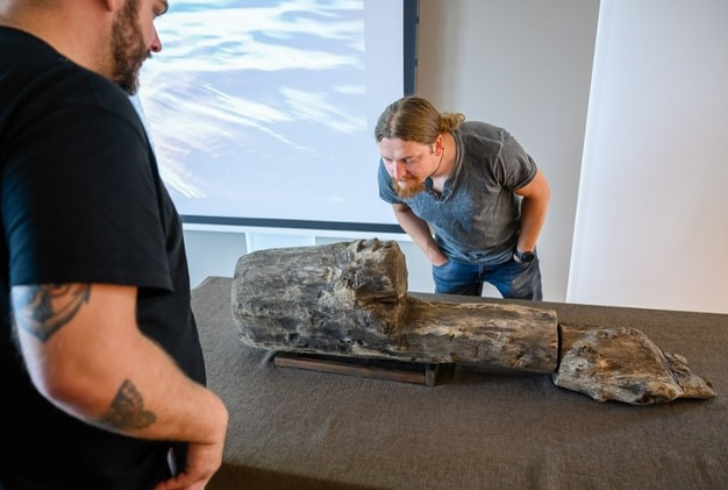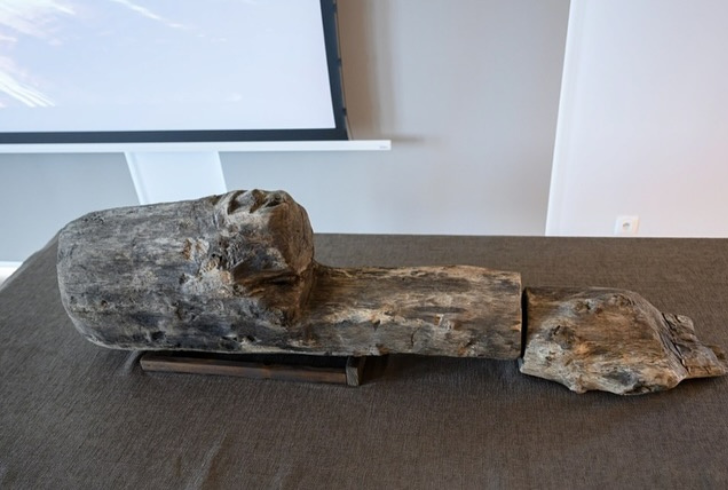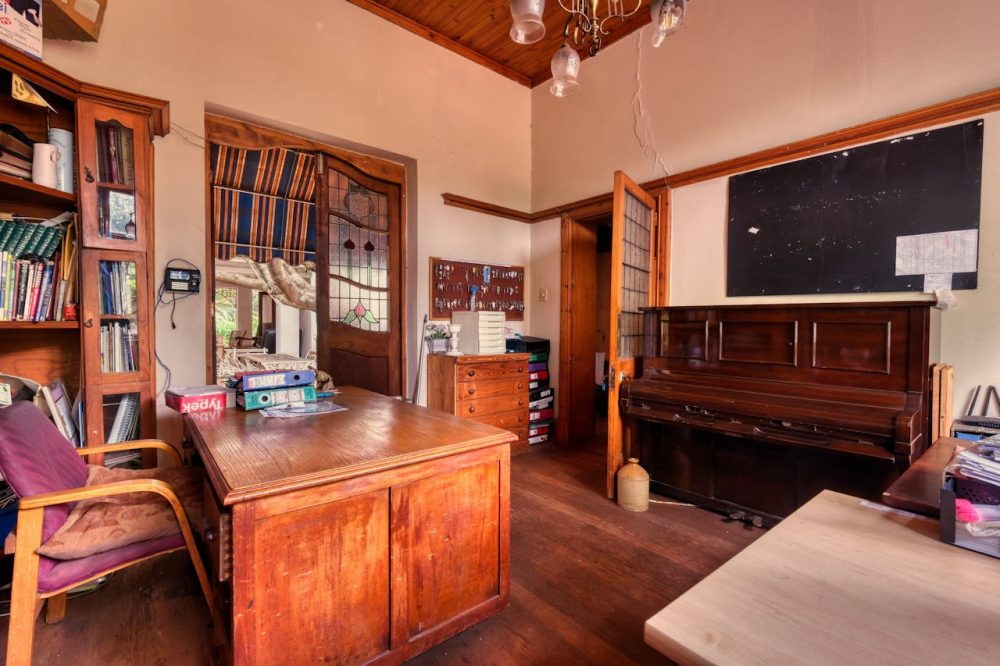A striking discovery beneath the waters of Lake Lednica in western Poland is offering a rare look into the past. Archaeologists from Nicolaus Copernicus University found a carved wooden beam that dates back nearly 1,000 years. The find gives new details about the beliefs and craftsmanship of early medieval Slavic communities.
A Wooden Face With Remarkable Detail
The wooden beam features a carved human face with lifelike features. It measures 12 centimeters tall and 9 centimeters wide. The carving shows carefully shaped eyes, a nose, lips, and cheeks, along with a clear oval head shape. This was not a simple decoration. It was part of the defensive ramparts of a settlement on Ostrów Lednicki, an island on the lake.

Instagram | thisisancient | A human face with detailed features is carved into a 12x9 cm wooden beam.
The beam, made from oak or elm, is 1.34 meters long. Tree-ring dating shows the wood came from a tree cut around 967 CE. This was a time when Christianity was spreading across the region. Pagan beliefs, however, still held strong. Experts believe the face had a symbolic role. Its placement suggests it may have served as a guardian figure designed to protect the community from harm.
Wooden Carvings in Slavic Belief Systems
Wood carvings like this one played an important part in Slavic culture. Many carried spiritual meaning. Archaeologists often interpret them as apotropaic symbols, used to keep away evil spirits.
The Lake Lednica carving is one of many that have such a purpose. The detailed face, set where a branch once joined the trunk, likely made the design even more meaningful. Similar wooden carvings have been found in other Slavic sites. Each shows that these communities valued protection not only through weapons and walls but also through spiritual symbols.
This find also has strong links to other historic pieces. It closely matches a ninth-century four-faced figurine from Wolin. Both pieces share traits such as triangular chins, straight noses, and simple, expressive eyes. These similarities show a regional artistic style unique from neighboring Scandinavian and Rus cultures.
Why the Wooden Artifact Survived

Instgaram | thisisancient | This discovery shows Pagan and Christian ideas overlapping, blending old and new traditions.
Wood normally rots quickly. But waterlogged conditions can preserve it for centuries. Lake Lednica’s environment kept the beam intact long after the settlement disappeared.
Because of this, researchers were able to recover more than just the carved wooden face. Other finds include bridges, dugout boats, and medieval weapons. Each artifact adds new details about how the community lived and built their settlements.
A Broader Look at Early Slavic Life
The Lake Lednica beam makes one thing clear—spiritual imagery went far beyond the walls of temples. Carvings were worked into gateways, palisades, and defensive walls, doubling as protection and as expressions of belief.
It marks a meeting point between two traditions—pagan roots and Christian teachings—woven together in the art and architecture of the time.
The carved wooden face is more than a rare find; it’s a direct connection to a community whose defenses carried spiritual meaning. In its details lies the memory of a people who lived at the crossroads of faith and survival, proving that even a sliver of wood can hold a world of history.









